The Great British Video Bake-Off
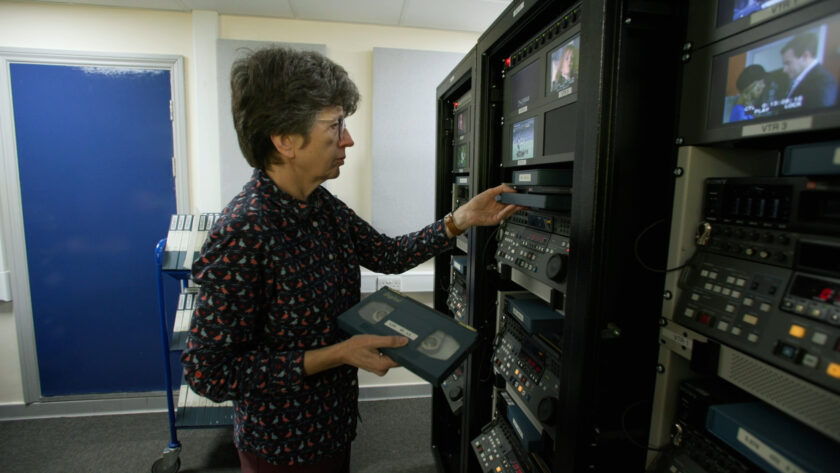
When people ask me what my job entails, I tend to say that I spend my days watching TV – television of the past, that is.
I’m a Video Conservation Specialist at the BFI National Archive and I’m part of the team currently archiving our huge collection of off-air TV video recordings, dating back to the mid 1980s. We’re preserving the programmes onto master files and you can view our work at the BFI Mediatheque and on BFI Replay. We’ve recorded thousands of hours of high quality video from ITV, Channel Four and Channel 5 material and, being off-air, these recordings include the adverts and all other material in between the programmes. These recordings are part of our work as the national television archive, which we maintain as Ofcom’s nominated body with the support of the independent public service broadcasters. So, you can see that these make up a unique record of social history.
But recovering this material isn’t plain sailing. Video formats of any sort haven’t been made or supported for at least 15 years. Tapes age and need some unusual treatments, including a process more cooking-related.
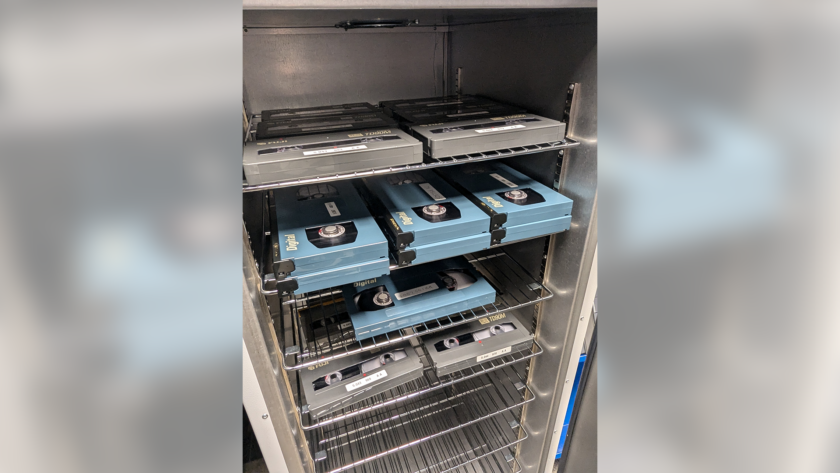
I worked at the BBC many moons ago, in BBC Enterprises’ videotape department – but first joined the Beeb in a very different area. I actually started working in the kitchen at Broadcasting House as a chef, so did my fair share of baking. Little did I know that in my later career I’d be baking again – but this time the ‘food’ would be videotape! Let me explain.
I’m working with a professional video format called D3 – a cassette tape with an early type of digital recording that dates to the mid 1990s. Like many ageing magnetic tape formats, it can suffer front playback problems including oxide shedding or ‘clogging’ (where fragments of the recording layer start to come away from the tape base and stick to the video machine heads). But there are ways you can help the tape to replay and one of those is heat-treating or “baking”. It sounds awful, but we don’t put tapes in a kitchen oven at Gas Mark 6! Someone in the dim distant past found that magnetic tape, put in a laboratory incubator oven at 50 degrees centigrade for a period of time, becomes playable without the problem of ‘clogging’ or stickiness long enough to capture the material. So that’s what we do, believe it or not.
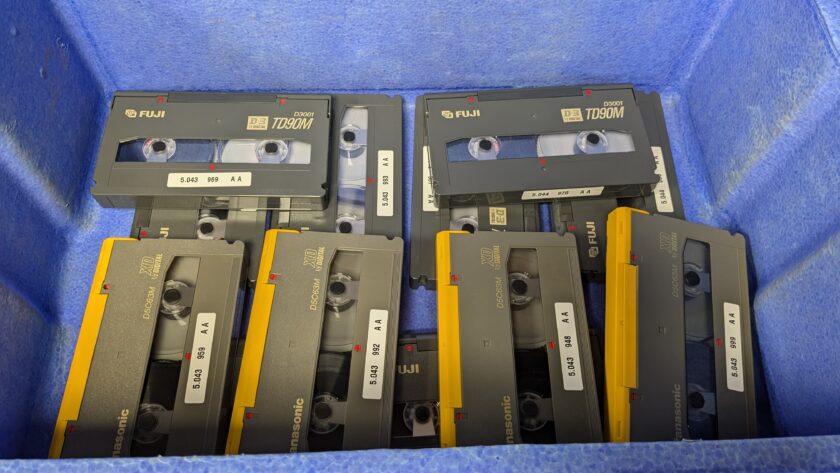
Once out of the oven and cooled down (very Mary Berry!), I’m able to play the tape in the D3 VTR machine. I’m currently using three machines and my work desk looks a little like a mid-1970s sci-fi set. Several panels, lots of button and three screens – all of which I can use to correctly align the programme signals in order to make the best quality recordings for archiving.
Each tape can be up to 2 hours long and a tape usually has 2 – 3 programmes, but I capture the whole tape as one file. This is because our database, Axiell, has all the details for each tape stored back when the tapes were recorded i.e. the programme series and episode, transmission date, timings and any comments about the recording. As the recordings are from the off-air signal that you would have seen at home, any problems that occurred on transmission will be on the tape and the VT operators of the time will have also logged that information.
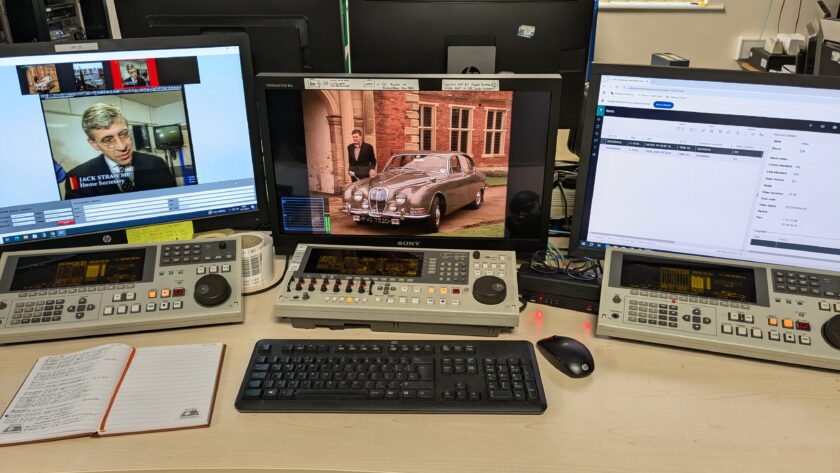
After I’ve made the files another automated computer tool uses the metadata from the database to split the file into the different programmes, with overlaps and with all the adverts in between. Then the files go into our preservation system and versions of the files get loaded into the Mediatheque and Replay viewing platforms for you to view.
Things don’t always go to plan. Sometimes, despite my best efforts, a tape refuses to play back even with the heat treatment and machine cleaning. These tapes get set aside for another specialist to deal with on a one-to-one basis. Also, the database isn’t completely error-free, so I keep a look-out and correct data like spelling mistakes in the titles and programme timings, in order that the automated splitting works correctly. But generally most tapes play well and every week more TV material gets added to the ever-growing list of titles in our archive.
So there you have it – how I go about archiving old video formats using a little cookery know-how. Think of that next time you’re enjoying a well-baked pastry!
– Alys Hayes, Video Conservation Specialist
How does the Mediatheque work?
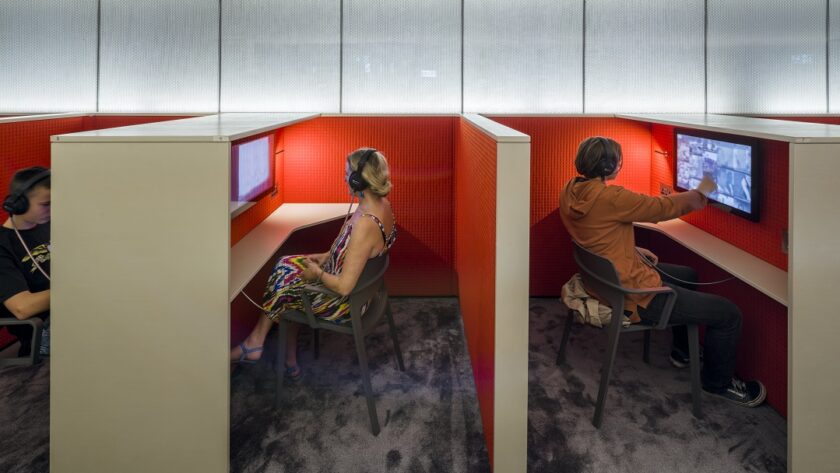
Two integrated BFI National Archive collections systems supply the information and the digital files that together make up the resources you see in the Mediatheque: the Collections Information Database (CID) and the Digital Preservation Infrastructure (DPI).
CID is the database where every film and television programme in the Archive collection is described. DPI is where we manage the digital files in the collection – from digitisation of film and videotape, and from acquisition of born-digital content.
Every moving image file that we preserve in DPI gets a compressed access copy created on ingest (we preserve very large uncompressed files, so it’s important to generate a smaller file – an MP4 – that is easier to play over the internet). The Python scripts that create the MP4, store its unique identifier in CID, along with the identifiers for the thumbnail and larger image (which by the way are created automatically from the video by the Python script). DPI includes a media server to deliver these access files to Mediatheque when requested.
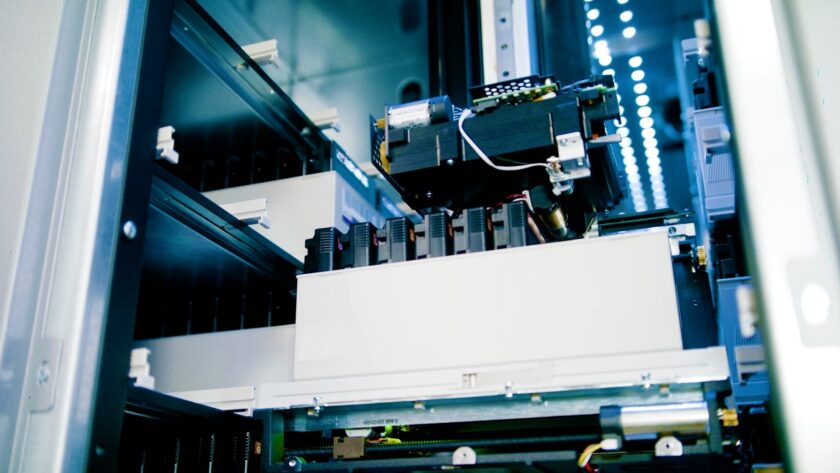
Once a day, the Mediatheque fetches and stores the CID data – title, date, cast, credits, description, file identifiers – for all new ingests to DPI since last time it checked. So when you search in Mediatheque, it fetches the thumbnails from our DPI media server for the search results; and when you press play, it fetches the MP4 from the DPI media server. (It actually plays an HLS stream from the MP4, but that’s a long story).
So the Mediatheque cleverly combines metadata and digital media from the Archive’s two integrated collections systems, to make one of the world’s richest moving image collections available in BFI Southbank.
– Stephen McConnachie, Head of Data and Digital Preservation
The Inside the Archive blog is supported by the BFI Screen Heritage Fund, awarding National Lottery funding.
